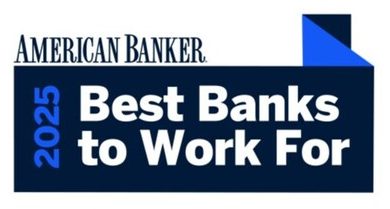Choosing the right employee recognition software can feel a bit like online dating. There are dozens of options out there, each with flashy features, glowing testimonials, and promises of transformed company culture. But once you get past the polished surface, the real question is: which one will actually work for your team?
The right platform can help you boost morale, retain top talent, and reinforce company values. The wrong one? Well, it might end up as just another forgotten login on your company dashboard.
To help you make a smart and confident choice, here’s a guide to the 10 most important things to look for when picking your favorite employee recognition software.
1. User-Friendly Experience for Everyone
If the software is clunky or hard to navigate, no one will use it—period. Your recognition platform should feel intuitive, not like a training course. That means it should be easy for managers, employees, and HR teams alike to give recognition, view activity, and manage rewards without needing IT support. If it feels like a chore, adoption will tank fast.
Look for clean interfaces, mobile access, and seamless login options (like single sign-on). Bonus points if the platform works just as well on a phone as it does on a desktop—especially for remote or frontline workers.
2. Peer-to-Peer Recognition Options
Recognition shouldn’t just come from the top. One of the biggest drivers of engagement is feeling seen by your peers. That’s why peer-to-peer recognition is a must-have. It allows employees to recognize each other for daily wins, collaboration, and culture-building moments that leadership may not even notice.
It also helps foster a sense of community and encourages a culture where appreciation is shared, not siloed.
3. Integration with Daily Tools
If you want your recognition program to become part of your company culture, it needs to be visible. That means integrating with the tools your teams already use—Slack, Microsoft Teams, Google Workspace, or whatever platform you use to collaborate and communicate.
Recognition should feel like a natural part of the workflow, not a separate task people have to remember to do.
4. Customizable to Match Your Culture
The best recognition software isn’t one-size-fits-all. Look for platforms that let you tailor the experience to reflect your company values, language, and goals.
Can you create custom awards based on your core values? Can you choose the tone of notifications and the look of the dashboard? These little things make a big difference in how your team connects with the platform.
5. Real Rewards—Not Just Points
Too many programs rely on point systems that feel disconnected or unclear. You want a platform that offers meaningful rewards—ideally with real dollar value and flexibility. Whether it’s gift cards, branded swag, or prepaid cards, the reward should feel like a genuine thank-you, not a transaction.
Some platforms even offer reloadable Visa or Mastercard-style cards employees can use anywhere. That kind of flexibility makes the reward feel much more personal and impactful.
6. Support for Remote and Global Teams
If you have remote workers, freelancers, or a distributed team across multiple time zones or countries, your recognition software should support them just as well as your HQ staff. Look for platforms with multi-currency support, global reward options, and multilingual features.
Inclusion matters—and so does making every employee, regardless of location, feel equally appreciated.
7. Insightful Reporting and Analytics
Recognition is great—but being able to measure its impact is even better. Your platform should provide reporting tools that help you understand:
- Who is giving and receiving recognition?
- Which departments are engaging most?
- Are rewards aligned with company values?
These insights can help HR and leadership identify high performers, address disengagement early, and celebrate wins more effectively.
8. Recognition Tied to Core Values
Every company says they care about values—but the best companies show it by tying recognition to those values. Choose a platform that allows you to tag recognition with company values so that employees aren’t just being appreciated for results, but for how they achieve them.
This makes your values more than just wall art—it turns them into living, breathing parts of the culture.
9. Budget-Friendly and Scalable
Your software should grow with your business. Whether you’re a 50-person startup or a 5,000-person enterprise, make sure the pricing model fits your size—and your plans for scaling.
Also consider platforms that offer multiple modules (like rewards, employee surveys, feedback, or even ERG management) in one place. Some ERG software providers also offer recognition tools as part of a broader employee engagement suite, which can be a great way to streamline systems and stay within budget.
10. Excellent Customer Support
Finally, don’t overlook customer service. When you’re rolling out a platform that touches every employee, you’ll want quick support and helpful onboarding. Look for vendors that offer personalized setup, training resources, and fast, responsive support teams.
Read customer reviews not just for the features—but for the experience of working with the provider.
Final Thoughts: Recognition That Actually Works
The best employee recognition software isn’t necessarily the one with the most features. It’s the one your team actually uses—because it fits into your culture, meets your needs, and makes people feel genuinely appreciated.
When done right, employee recognition isn’t just a feel-good initiative. It’s a powerful tool that improves retention, drives engagement, and strengthens team connection across every level of your company.
So take your time. Demo the platforms. Ask the hard questions. And most importantly, involve your employees in the process. After all, they’re the ones who’ll be using it—and feeling the impact of recognition that really means something.



